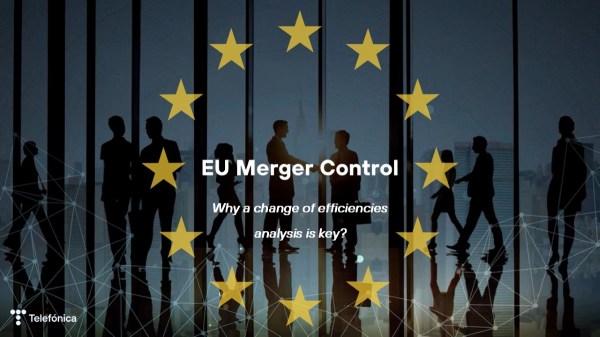 Christoph Steck /@christophsteck
Christoph Steck /@christophsteck
Director of Public Policy and Internet at Telefónica
The lack of trust and the geopolitical gap encourage a technological ‘decoupling’ that puts at risk the global ecosystem of the Internet as we know it today.
2019 was the 30th anniversary of the World Wide Web and the 45th anniversary of the IP protocol. Both were fundamental in creating the Internet, a global and interconnected space that has opened up information to billions of people and revolutionized our economic and social systems. If “the world is flat” as Thomas Friedman said in 2005 to describe the globalization of economies, it is, above all, thanks to the Internet. Many studies have shown that those regions that exchange large amounts of data also develop more trade.
Today the digital world of data flows lives in symbiosis with the analogue world of trade. Sooner rather than later, trade will become increasingly digital, when for example 3D printers will produce parts in any country based on designs made on the other side of the world thanks to data transfer via the Internet. More and more our economic activity will be based on this shared Internet infrastructure that has become the cornerstone of today’s globalized economy.
However, since the 1990s this global space began to fragment into its “social layer”. The most famous example is China’s Golden Shield Project, better known as the Great Firewall, which was devised in 1998 (the year of Google’s birth) and became operational in 2003. The objective was to regulate and limit the use of the Internet, based on surveillance and censorship of activities and applications, creating a great firewall for the Internet in China. Other countries, mostly with authoritarian systems, have followed suit, revisiting the promise of the Internet as an accelerator of democratic systems and open societies that empowers people to transform it into a system that offers mechanisms of social control and surveillance never before seen in human history. It is a fact that today what can be done on the Net varies substantially from country to country. Predictably, states and the Westphalian system have imposed themselves on John Perry Barlow, who in his 1996 Declaration of Independence from Cyberspace in Davos said: “You have no sovereignty where we meet”.
In contrast, the layer of technology and logic of the Internet – the infrastructure, hardware, software and protocols – are the same around the world. Both China and Europe or the United States use mobile phones made with microprocessors designed in Europe and produced in Taiwan, with hard drives from South Korea and operating systems developed in the United States. They all use telecommunications networks developed and manufactured in Europe and China. Applications and brands may vary, but the technology base, standards and ultimately the technology remain globalised.
This hasn’t always been the case. For example, in the history of the mobile world before the 4G standard, which is global, there were a variety of standards. In the first (analogue) mobile generation, a country-specific technology was developed. In Europe, the NMT system, adopted in Norway, the Netherlands and Russia, coexisted with TACS in the United Kingdom, TMA in Spain, Radiocom 2000 in France and RMTI in Italy. None of these were adopted in the USA, which developed the AMPS, or in Japan, with the JTACS. In the second mobile generation (2G) the technology was concentrated in a few standards, highlighting the European GSM that coexisted with the CDMA and TDMA as the most relevant. Already in the third generation (3G), a unique global standard was developed as a result of collaboration in the International Telecommunication Union (ITU): UMTS. Although it was not adopted globally, it served as a bridge to 4G; the first time a global mobile standard was developed, after more than 25 years of technological development. And until recently, the trend was the same for 5G.

Nevertheless, this aspiration for globalisation of the technological infrastructure is being reversed. It can be said that we are facing a process in which governments and policies are revising the globalized world of technology and fragmenting the Internet not only in its social layer but also in its technological base. In November 2019, the fourteenth edition of the Internet Governance Forum (IGF) was held in Berlin, the largest Internet governance conference, where technological decoupling was the most relevant political issue. In her opening speech, German Chancellor Angela Merkel, recognized as a great advocate of international trade and open markets, made a statement in favor of European autonomy in the digital world:
“Digital sovereignty does not mean protectionism or state authorities saying what information can be disseminated, censorship in other words; rather, it describes the ability of both individuals and society to shape the digital transformation with autonomy and independence; that is, with self-determination”.
Next, the United Nations Secretary General, António Guterres, correctly identified what he called the “geopolitical divide” as the most relevant risk that is fragmenting the Internet.
What does this mean? Deep down, the rivalry between the great world powers of today, mainly the US and China, has destroyed relations of trust. This is the basis of a globalized economy with a division of production, as Adam Smith argued in The Wealth of Nations. The consequence is that many governments are making great efforts to build an autarkic technological and digital system that allows them to protect themselves from potential threats, which encourages the risk of creating a technological decoupling by creating watertight digital compartments.
The trigger for this radical political change has been the trade war between the US and China. As part of this confrontation, and alleging national security risks, the US government has banned the export of US technology to the Chinese company Huawei, one of the most relevant manufacturers of communication and mobile networks in the world. This law prevents, for example, the use of the Android operating system and multiple applications (all developed by Alphabet/Google) in Huawei’s mobile terminals or the use of microprocessors from American companies such as Intel or Qualcomm. To put in context the dimension of the potential fragmentation, 14% of the smartphones sold in the world in 2018 were manufactured by Huawei, amount that would exceed 40% if the terminals of Chinese manufacturers were included.
Huawei’s reaction was predictable: he is developing his own mobile operating system, with the aim of being independent of Android or any other software from the USA. This new operating system requires an ecosystem of its own applications, different from those used by mobiles with the Android system. The company is also developing and manufacturing its own microchips. The result is a new technological ecosystem that is independent and separate from the current one. It will not share hardware such as electronic components or microchips, nor operating system, nor applications with the mobiles used in the USA.
A world of technology islands
The result is that the globalized world described at the beginning of this article, with networks and mobiles based on American, European, Chinese and South Korean technology, no longer exists. We seem to be moving towards a bifurcated technological world: Chinese or American.
The Chinese administration supports this development and in 2020 will implement the “3-5-2” strategy, which obliges its entire administration to replace foreign technology with domestic technology, including computer operating systems and their applications, by 2022.
This technological fragmentation is based on the adoption of own and domestic technologies as in the early days of mobile technology. Its effects, which are much more significant and far-reaching than any other fragmentation, are leading us to the creation of independent and self-sufficient technological islands. And nothing guarantees that these islands will be interoperable or can be interconnected.
In 2019, Russia passed a set of laws to ensure the stable functioning of a Russian Internet (Runet) if it is disconnected from the global infrastructure. The laws include the creation of a proprietary Domain Name Server (DNS) system that would manage and direct all Russian Internet traffic within its borders, without the global hierarchical DNS system that supports the operation of the global Internet. With an agenda of its own Internet domains, the Russian government could guarantee the functioning of the Internet within the country without resorting to any external resources, both by a cyber-attack that would prevent Russia from accessing these global resources and by its own decision to isolate the country from the outside world. The result would be a Russian Internet completely disconnected from the rest. The government of Iran is taking similar measures to prevent its citizens from accessing the global network.
Are we heading towards a world with many parallel internets, connected or not, with borders that can be opened or closed at the discretion of sovereign states? A world of two giant technological ecosystems, each with its own internet and national or regional communication network, controlled by governments? Hopefully not.
The truth is that we are moving towards a de-globalising political landscape that puts the focus on national sovereignty, or regional in the case of the European Union, and which carries the great risk of destroying confidence in the technological supply chain and a global Internet system.
Fragmentation and cyber attacks
In this line and returning to the reflections of the UN Secretary General in Berlin, once the internet and technology is fragmented, there is an even greater probability that the trigger for the next international confrontation will be a massive cyber-attack. Because when states have an “immune digital system” and a chance to disconnect from the global internet, the incentive to engage in a large-scale cyber-attack grows substantially. In other words: a fragmented technological ecosystem and the Internet increases the risk of cyberwar. And separate Internet networks also increase the concentration of power and the ability to control these networks, limiting the freedom of users.
This situation can be avoided, although it is doubtful that international policy will be able to achieve it. The solution lies in building a system based on trust. Dialogue, cooperation and coordination will be needed to establish a set of rules to reduce these risks. As with ABC (atomic, biological and chemical) weapons, a new ban on D (digital) weapons is needed to make a cyber-attack more difficult. There is a lack of independent institutions to investigate and conduct digital forensic analysis in cases of cyber-attacks. The initiative to create a CyberPeace Institute in Geneva is a good step in this direction. National security policies should be limited to relevant sectors and uses. Internet users, NGOs, industry and private sector associations, UN agencies such as ITU need to join forces and advocate for the protection of an interconnected and global internet.
Europe and the US should work together to develop a common vision open to other countries, based on respect for human rights and multi-stakeholder governance. Many Latin American countries, as well as India, Australia, New Zealand, Canada, Japan and other African and Asian countries could join this alliance to preserve the Internet as it is known today. A democratic, open, secure and interconnected Internet remains more attractive to all stakeholders, public and private, and would attract users and businesses around the world, including authoritarian states.
The premise is clear: multi-stakeholder participation and cooperation can help ensure the freedom and universality of the Internet. It is a task for all of us to define which values, principles and rules we want to govern the digital world we are building and which will be inherited by future generations.
The global internet is neither invulnerable nor indestructible. Never since its inception, 45 years ago, has the Internet been more at risk than it is today. Its success as a global, open and accessible network, as a common good, will depend on our ability and willingness to work together and defend it every day.
This article was originally published in Spanish in Relaciones Exteriores magazine: https://www.politicaexterior.com/articulos/politica-exterior/la-fragmentacion-del-mundo-tecnologico/








